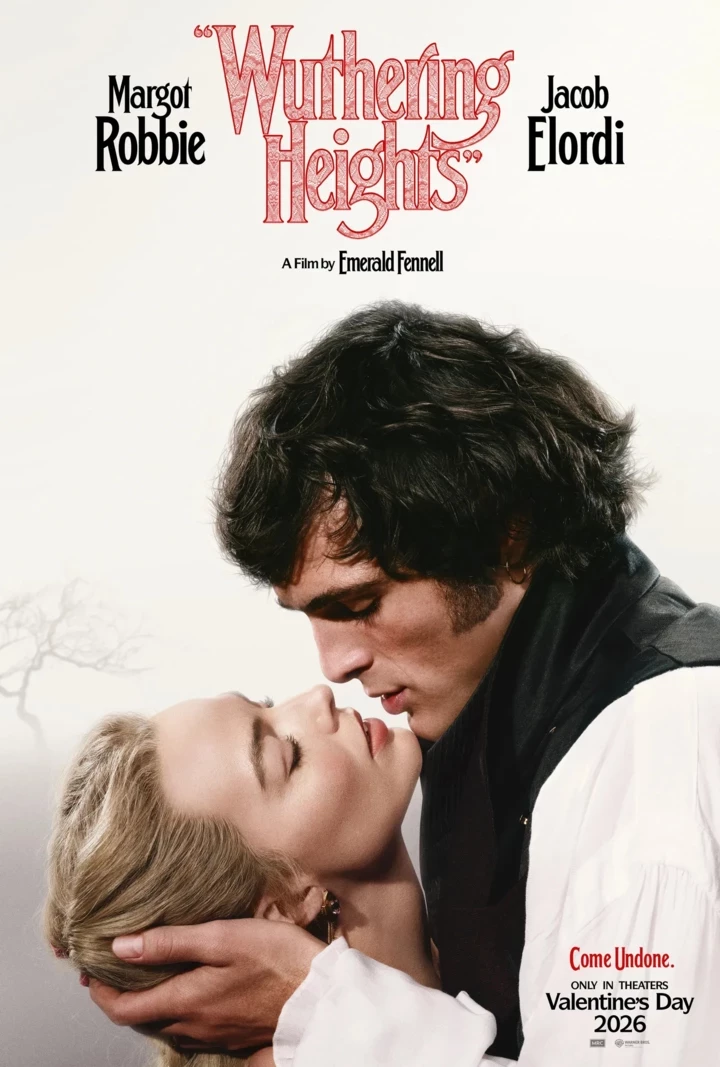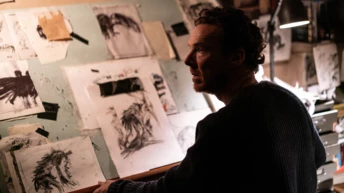
Save this storySave this storySave this storySave this storyYou’re reading Critic’s Notebook, our weekend column looking at the most interesting moments in the cultural Zeitgeist.
Sean Combs mouthed “thank you” to the jurors, his hands clasped in prayer. The intricacies of their deliberations will be revealed later on, in the requisite television interviews, but, as of Wednesday morning, what mattered was that Combs had been acquitted of the racketeering and sex-trafficking charges that would have put him away for life. The diminishment in reputation, the status as pariah or laughingstock, the looming sentencing for the lesser charges (two counts of transportation to engage in prostitution, amazingly, his first conviction)—he would work his troubles into a narrative of redemption. As one of Combs’s associates said in a Profile of the mogul that ran in this magazine more than two decades ago: “Puffy will always come back. He’s like nature.”
On the second day of jury selection in the case of U.S. v. Sean Combs, Arun Subramanian, a federal judge for the Southern District of New York, called for a closed-door meeting with a defense attorney involved in the case. Subramanian, who is in his forties, and appointed to the court by Joe Biden, exudes a kind of good-natured adaptability; he is a disciplinarian, but a reasonable one. And yet his patience had already been tested by the sixty-seven-year-old Mark Geragos, defense attorney to the stars, who was serving as an unofficial adviser to Combs’s legal team.
“This is ridiculous,” Subramanian told Geragos. “I think referring to the prosecution in this case as a six-pack of white women is outrageous.”
Geragos is a seasoned practitioner who gladly plays the churl if the performance will help sway public opinion. (In his younger years, while representing Michael Jackson in a child-molestation trial, he told Jackson’s accusers that he would “land on you like a hammer.”) The “six-pack” comment was not one that he had made in the courtroom; rather, it was part of a rant he delivered on “2 Angry Men,” the podcast that he co-hosts alongside Harvey Levin, the founder of TMZ. On air, Geragos belittled the federal prosecutors who had been tasked with arguing the government’s case, which was that Combs, one of the most famous entertainment moguls in the world, was guilty of sex trafficking, racketeering, and transportation to engage in prostitution. He also complained that a widely circulated video, showing security footage of Combs wearing nothing more than a towel around his waist, striking Casandra Ventura as she attempted to flee from him in the hallway of the InterContinental Hotel in Los Angeles, constituted a “character assassination.” (The phrase is a favorite of his; he also used it when representing Hunter Biden during his tax case.)
Made aware of the podcast, the “white women” federal prosecutors argued to Subramanian that Geragos’s behavior endangered the jury-selection process. Subramanian sided with the government—creating precisely the quasi-alliance that Geragos had meant to construct, the stunt having been a way to launder his aggrievement into the record: “I think when you’ve got a Black man who’s being prosecuted and the client feels like he’s being targeted, it’s an observation.” After getting chastised by the judge, Geragos promised to keep things respectful from then on. Subramanian warned Geragos that he’d be listening to his podcast. “As long as you subscribe, I’m all for it,” Geragos replied.
Of the many stories told about Combs inside and outside the courtroom at 500 Pearl Street, in downtown Manhattan, the high-tech lynching plot works the least. This is a man who is on view solely in jail—he spent nine months at the Metropolitan Detention Center, leading up to the trial—and in the courtroom. Federal cases forbid cameras. Combs, who looks thinner and older than we remember—his hair has turned white, as dye is not allowed inside of jail—exists mainly in court sketches, done by Jane Rosenberg, the portraitist of Harvey Weinstein and John Gotti. One day, during a break in the proceedings, Combs asked Rosenberg to soften him, as he felt her style made him look like a koala.
Combs, a human Bacchus, has devoted more than thirty of his fifty-five years to the ruthless building of a life-style empire, beginning with music production and artist management at his record label, Bad Boy, and then venturing into fashion, alcohol, media, television, and, ultimately, the promotion of himself. The boy from Mount Vernon, New York, made more than good—an icon of cultivated living to rival Martha Stewart. Wasn’t it Combs who pioneered the relentless self-advertising that has become commonplace today, licensing his name and his image to brands that fit his standard? Those who defend Combs, those who feel indifferent toward him, those who are convinced of his guilt, can all justify their reasoning through the fact of his proud megalomania, his relentless broadcast of his own name.
Or names. The aliases abound. The indictment against Combs lists five—Puff Daddy and P. Diddy among them—but it is the “Diddy” moniker that has risen above the rest and stuck in the coverage, in the daily conversation. It is his most famous name, yes, but it also rings, usefully, with a sense of peril and puerility.
The Diddy federal trial is the outgrowth of a civil suit filed, in 2023, by Ventura against Combs. Both a former girlfriend and a former employee of Combs’s, Ventura, a model-dancer-singer from Connecticut, met him in 2005, at the age of nineteen. He was thirty-seven. Combs signed Ventura to his label, Bad Boy Records. Then he promoted her to lover and muse, throwing her on his suit-clad arm, for the duration of some fifteen years, as if she were jewelry enfleshed. This was no love match—Combs still publicly pined for his former girlfriend Kim Porter, the mother of the majority of his children, and he still lived in the shadow of the music-royalty dynamic that he once had with Jennifer Lopez. But a fun, mutually beneficial daddy-baby relationship, we thought—or perhaps did not think, as their pairing stirred little intrigue. The end of their relationship, though, did trigger gossip alarms. Ventura moved on with Alex Fine, the physical trainer who first worked with Combs and then Ventura to help her maintain her look. What changed? Why fall in love with “the help”?
The civil suit unveiled the mystery. Ventura described years of coercion, sexual abuse, rape, and physical battering at Combs’s hands. His business-maverick persona could convey mercilessness, but a tolerable amount. The Ventura suit suggested sadism. Combs forced her to take drugs and have sex with male sex workers, she claimed, all for his voyeuristic pleasure. He exhausted her; he used her as a sort of plastic doll. Perhaps more shocking than the suit was the speed with which Ventura settled it, within twenty-four hours. She had filed the suit in New York State under the Adult Survivor Act, an extension of the statute of limitations for sexual-abuse civil suits. The legislation, which has lapsed, was a #MeToo reform signed into law by Governor Kathy Hochul. Notably, Ventura did not take her allegations against Combs to the press—a coöperative strategy that requires the memoir-ish truth-telling of the victim, and the impartial investigation of a journalist. The decision to bypass culture, in a sense, and go straight to the law points to the power of her adversary, a living metaphor for the culture itself.
The hotel security footage was leaked to CNN in May, 2024. Combs posted an apology video to Instagram, deploying therapy speak, but the damage was done. The narrative everyone uses is that of the fall from power. Government raids of the mansions in Los Angeles and Star Island producing images of a small armory and, more disturbingly, many bottles of baby oil; the silly rumor of the flight overseas; the spectacle of his arrest in New York City, in September, 2024; the deluge of civil suits, the deluge of alleged victims, both approaching the triple digits. In Billings, Montana, Reciprocity Industries—“a software development company with specialist expertise in legal and television advertising and call center services,” according to its website—set up cubicles for workers who droned into their headsets: “Were you or your loved ones sexually abused by Sean (Love) Combs, known as Diddy, Puff Daddy, and P. Diddy?” In March, two months before the trial began, the Times reported that the hotline had received twenty-six thousand calls. An atmosphere of opportunism and conspiracy coalesced, fed by shock jocks, TikTok psychologists, and citizen-journalist bloggers, who have become characters in the saga, and by Combs himself.
On the morning of May 12, 2025, eight men and four women filled the jury box. Subramanian promised them that he would move the trial along quickly. Combs is reported to have faced them, appearing professorial, in a sweater, his hands clasped over a notebook. The demographic data in celebrity criminal trials is a point of obsession, given the stratum of the star defendant: Who are Combs’s peers? Apparently, they are between thirty and seventy-four years old. Professions include architecture, nursing, biology, investment analysis, and massage therapy. The massage therapist was debated over, the defense offering a concern that his expertise in body work might influence his view of physical trauma. There were debates over race, too. Marc Agnifilo, one of Combs’s defense lawyers, accused the government of purposefully striking Black jurors. Subramanian staved off the identity-politics hysteria. In the end, the desired rainbow: the final panel included one Asian person, two who were identified as “Hispanic,” four whites, and five Blacks, which would diminish to four, by mid-June, after Subramanian dismissed Juror No. 6, who he believed had shaded his testimony to get a seat.
Emily Johnson, a U.S. Attorney, took fifty minutes to deliver her opening statement. She sought to kill the celebrity in the jury’s mind: “To the public, he was Puff Daddy, or Diddy. A cultural icon, a businessman—larger than life. But there was another side to him, a side that ran a criminal enterprise.” The RICO statutes (named for the Racketeer Influenced and Corrupt Organizations Act) conjure the Mafia, a highly orchestrated and highly mythologized network that carries out dastardly crimes. How to frame the bon vivant as a felon? The vernacular of Combs’s activities comes across as kinky, not immediately nefarious. During the trial, jurors watched clips of what Combs has described as “freak-offs,” voyeuristic sessions in which he would allegedly force women, who were under the influence of drugs, to have sex with other men in his presence. When allegations of arson, rape, and abuse were introduced, particularly as described by two key witnesses, Ventura and a woman who testified under the pseudonym of Jane, the jury felt the gravity. But the charges required proving the high standard of conspiracy. Johnson’s task was to prepare the jury to interpret, for example, the use of a company card to buy baby oil, or a flight for an escort, as the predicate offense warranting life in prison. The argument was that Combs’s employees, following his orders, facilitated a pattern of coercion and violence that far exceeded typical celebrity shenanigans. “He called himself the king and expected to be treated like one,” Johnson said.
Geragos’s daughter, Teny, another member of the defense team, followed the prosecutors, whom she depicted as prudes and zealots. “Sean Combs is a complicated man, but this is not a complicated case,” she said. The defense argued that the racketeering and trafficking charges—RICO offenses—introduced a standard of proof that the prosecution could not possibly meet. Yes, Diddy cultivated unorthodox sexual tastes. Yes, Diddy took drugs. Yes, Diddy had a propensity to commit acts of domestic violence. Had the prosecution charged Combs with domestic violence, he would have expressed remorse and accepted his punishment. But the video in the hotel hallway of Ventura and Combs, Teny Geragos argued, showed a squabble, not sex trafficking. The defense, with its framing, wanted to awaken any latent unease that a juror—an older one, perhaps—might feel toward the preceding years of correction between the sexes. “Being a willing participant in your own sex life is not sex trafficking,” Geragos said. The idea was that cultural shifts could not pollute a legal line of reasoning. Geragos molded Combs’s relationships with Ventura and Jane into nasty little afternoon soaps: the passionate meeting, the descent into addictive toxicity, infidelity and violence on both sides, the separation, and, ex post facto, the financial revenge.
Those who made their way into Subramanian’s court could view the Combs family, an intergenerational brood consisting of the matriarch, the eighty-four-year-old Janice Combs; Diddy’s sons, Quincy, Christian, and Justin; and his daughters, Jessie, D’Lila, and Chance. One gesture shared between Combs and his children during the trial was the Gen-Z heart, assembled from cupped fingers. The daughters, still teens, appeared less and less often, as trial testimony and evidence produced the bacchanalia pictures of hotel rooms soaked in baby oil, of bodies dehydrated and bruised, of insane text messages, of frightened employees, of paper-bag bribes—the constitutive elements of Diddy World.
The prosecution, over six and a half weeks, called thirty-four witnesses, including hotel personnel, former personal assistants to Combs, stylists, federal agents, male sex workers, and victims, including Ventura and Jane. Some, the retribution seekers, were eager to dish; those forced to appear via subpoena sat deadpan. At times, the scene could be unserious; one spectator erupted in outrage—“You’re laughing at a Black man’s legacy!”—and dared a marshal to “pull your gun out, ninja,” before being thrown out by Subramanian.
The rumor was that Ventura would be called in to testify first. But the prosecution, building the tension of the story, first called a character lower on the bill, Israel Florez, an L.A.P.D. officer. Florez had worked as a security officer at the InterContinental Hotel. Excerpts from the 2016 video played. Florez narrated: “Combs comes up behind her in a towel and slams her in the head and drags her to the floor, starts to drag her back to the room.” Desperate to get his hands on the footage, Combs, he said, tried to bribe him. Through the next witness, a stripper named Daniel Phillip, the machinery of the “freak-offs” was established. A woman, who he later learned was the famous Ventura, would secure services through his employer, booking a private show at a hotel room. After arriving at the agreed-upon hotel, the brief would shift. A masked man, Combs, would sit in the corner, sometimes masturbating, sometimes directing the action. Phillip testified that he once urinated in Ventura’s mouth. He also testified that he saw Combs throw an empty liquor bottle at her. Why didn’t Phillip help her? “I was just excited that I was in this world and, you know, happy to be involved with people with such notoriety,” he said. Glamour, and the promise of checks, kept participants like Phillip quiet.
Ventura took the stand next, the prelude witnesses having set the stage. She was heavily pregnant with Fine’s and her third child. She described her early infatuation with Combs and the life he led: yachts, parties, and a generosity in all things, which, in the beginning, included his affection and his time. As the relationship progressed, Combs withheld attention from Ventura, who would do anything to be with him. That “anything” came to encompass the freak-offs. Combs forced Ventura to take ecstasy and ketamine, a method of subduing her. He struck her, frequently. Employees, including security and personal assistants, and Combs’s premier consigliere—a woman named Kristina Khorram, or K.K., a former chief of staff of Combs Enterprises, whom spectators cast as the Ghislaine to Combs’s Epstein—would facilitate his desires and tidy his messes. On the stand, Ventura was calm. Sometimes, recollecting her ordeal, she cried.
Anna Estevao, a member of Combs’s defense team, cross-examined Ventura. She rooted the defense’s skepticism in text messages—which is to say, Ventura’s “voice.” This was a trial about text messages, ephemeral communications now tasked with representing truth. A humiliation for Ventura, now thirty-eight, was reading aloud her words, some fifteen years old. One critical prosecution exhibit was the photograph used to identify Ventura to witnesses. In it, she looks young, baby fat still in her cheeks, because she is young. Estevao, to undercut any sympathy for Ventura, produced texts, sent from Ventura to Combs, to depict her as needy, jealous, and vindictive. Spinning Ventura’s placations to Combs as real enthusiasm, Estevao portrayed her as consenting, always—a mutual player in a sordid love game.
The defense had raised a concern, in chambers, about Ventura’s appearance on the stand. “Pregnancy is a beautiful thing,” Agnifilo told Subramanian, but he worried that Ventura’s pregnancy could endear her to the jury. Although women lawyers were key to the defense—Estevao acted as the lead defense attorney, and Tevy Geragos gave the opening argument—Agnifilo and Brian Steel, fresh off his tenuous win in the Young Thug trial, took up plenty of oxygen in the courtroom. Agnifilo is what observers call a character: chatty in a faux-fatherly way, he tended to begin his cross-examinations with a sort of shrugging apology. It’ll only take a few minutes, he’d assure them. This was rarely true. Agnifilo, who had, for a time, argued in defense of Keith Raniere, the leader of the NXIVM cult, in another recent RICO case, liked to repeat himself. In that case, though, the jury found Raniere guilty of racketeering. (In a somewhat cutesy turn, Marc Agnifilo is married to the prosecutor Karen Friedman Agnifilo, with whom he represents Luigi Mangioni, the good-looking twenty-seven-year-old who has been charged with murdering a pharmaceutical executive in cold blood at dawn, the public’s vigilante hero.)
Because the burden of proof in a criminal trial is on the prosecution, Diddy’s lawyers relied on cross-examinations to build their narrative. The lesser-known members of the defense team made impressions, especially with witnesses whose testimony seemed prime for comedy. A witness named Sharay Hayes, a.k.a. the Punisher, a male erotic dancer, who had a number of freak-offs with Ventura and Combs, felt the ridicule of the defense attorney Xavier Donaldson, who, wearing a lavender Easter suit, managed to emasculate him. Hayes has written a dishy book about battling erectile dysfunction called “In Search of Freezer Meat”; Donaldson had Hayes repeat the title at least three times. Dawn Richard, a musician who was once a member of the groups Danity Kane and Diddy – Dirty Money, both created by Combs, and whose testimony buttressed that of Ventura, had to spar with the defense attorney Nicole Westmoreland, who accused Richard of being inconsistent. Richard had several meetings with federal prosecutors leading up to the trial to go over her testimony. It was only in the most recent meeting that Richard mentioned a death threat made against her by Combs. “A death threat that you didn’t recall on seven different occasions?” Westmoreland asked, sarcastically.
Regina Ventura, Casandra’s mother, also acted as a witness. Her daughter was reported not to have made eye contact with Combs; Regina’s eyes did not leave Combs throughout her testimony. Through her, the prosecution entered photographs of Casandra looking downward, as she lifted her shirt to document bruising, taken during a trip home for Christmas. Regina testified that Combs had threatened to blackmail her daughter by releasing video footage of a freak-off. He demanded that her parents pay him twenty thousand dollars, money they did not have. They came up with the funds. A few days later, in a humiliating gesture, Combs, worth hundreds of millions of dollars, sent the money back.
Subramanian asked the defense whether they had prepared a cross-examination for Regina Ventura. Agnifilo rose. “Good afternoon, Mrs. Ventura,” he said. He had no questions.
The cliché of the media circus applies. Line-sitters camped out, in the early days of the trial, the evening before a proceeding, holding spots for reporters, who would relieve them at dawn. The reporters would go through security, surrender their electronics, and head to the high floor. Twenty-odd seats were reserved for the press. Some days, like that of the testimony of the musician Kid Cudi, an ex-boyfriend of Ventura’s, the line outside the courtroom was especially long. (Cudi testified that Combs had broken into his home, and he also suspected that Combs had orchestrated the insertion of a Molotov cocktail into the drop-down canopy of his Porsche.) Many publications had multiple reporters planted—some in the courtroom, some just outside. Information flowed from the phoneless reporters in the room to print within a matter of minutes.
The trial as a story, however, belonged to the “new guard,” as it is sometimes called, the scores of self-funded influencers who put out reams of content on TikTok, Instagram, and YouTube. There was a proprietary feeling among them; many had been following the Diddy accusations for years. Rarely was impartiality a consideration. The point wasn’t to provide rote coverage; it was to provide a narrative. A lot of the so-called new guard couldn’t pay for line-sitters, and so they ended up in the overflow, the only place in the world where the trial was television. The feed was made up of two channels, one showing the lawyers and the witness (the jury was not visible), and the other, exhibits submitted into evidence. The feed was shitty; observers strained in vain to glean observational detail—such as Combs’s facial expressions—that would add color to an article. But the populist energy, the live analysis, made for its own story.
After the prosecution questioned an expert witness, the forensic psychologist Dawn Hughes, on the complexities of domestic abusers—namely, why women stay with abusers—there was lunch. Bloggers like Tisa Tells tended to rush downstairs to grab their phones and put out their content, delivering analysis with bugged eyes and a mock-shocked tone; CNN and Court TV reporters would do something similar, deploying the “this-just-in” vocal bass. At the elevators, a young white man, his hair slicked back, excitedly approached a brown-skinned man in a hoodie and began to fanboy. The two men stepped into the elevator and headed to the cafeteria, where they unwrapped sandwiches. “We’re getting into territory where anything can be abuse,” the man in the hoodie said. “Any bitch can claim abuse. Women no longer have the agency they fought so long for.” His new acolyte nodded. Later, I looked up Hoodie Dude, whom I had recognized by face but not by name, and found that he was Myron Gaines, a former agent for the Department of Homeland Security, the owner of a YouTube account demonetized by the company, and author of the book “Why Women Deserve Less.”
The manosphere clamored to own the story, but serious trial media, such as Inner City Press, emerged as the trustworthy alternative sources. One reporter, I noticed in the overflow room, sometimes did not go to lunch. Instead, she chose to sit by a window on the twenty-fourth floor, stretching her legs. Her name was Brianna Logan, and she is active on Substack and Instagram. Her followers had crowdfunded her travel to New York for the trial. Each day, she put out a video analyzing the courthouse goings on, summarizing the trial and the meta-trial. She’d covered the trials of Ghislaine Maxwell, Harvey Weinstein, and Kevin Spacey, she told me. Later, she told the Hollywood Reporter that there’s been a shift in her treatment by legacy-media reporters: “When I was covering Ghislaine Maxwell, it was so disrespectful the way I was treated. Like, ‘Give me that seat! I want to sit there,’ and they’re, like, ‘Oh, cute. You’re on Instagram.’ They’re so much more respectful now. It’s different.”
The overflow room was a laboratory in which public opinion could be tested. The lay trial addicts, spilling ink on page after page, taking part in their civic right, shared a camaraderie; they believed the proceedings to be important, “as important as O. J. Simpson,” one seatmate said to me. Outside Pearl Street, tell the worldly people you are attending the Combs trial and awaken in them a pitying look. The sense is that the trial is not beneath reportage—everyone understands the need for the live feed—but beneath criticism. Combs is not our O. J. Simpson, no literary icon of race, power, and sex. What good book will come of this? Public intellectuals do not care to untangle the fall. Is it because the artistry is glittering but common, barely artistry, not God-given, like Simpson on the field or Michael Jackson in his leather? And so, too, the offense—awful stuff, everyone agrees—but no existential violation. Combs is a petty tyrant, reflective of the times. The scene outside Pearl Street, following the verdict, was literally carnivalesque, almost nihilistic, as revellers poured baby oil on themselves.
The verdict came after thirteen hours of deliberation, spread across three days: not guilty of racketeering and sex trafficking; guilty on transportation to commit prostitution, a violation of the Mann Act. A victory, basically, for Combs, who was cheered as he was processed to his holding cell, and for the “modern love story” plot, to paraphrase from Agnifilo’s closing statement. “Did any witness get on that witness stand and say, ‘Yes, I was part of a racketeering enterprise—I engaged in racketeering’?” Agnifilio asked. No one did. No one speaks like that. Those who sit stunned and angered—Look at what he got away with—must concede Agnifilo’s bitchy point. The verdict was a repudiation of the law’s distance from the vernacular of life and real language, of the proceduralism of the legal system. It was a repudiation of the government, which in the eyes of the jurors overshot, putting ambition over justice, leaving Combs’s victims exposed to all manner of backlash.
Because they feared reprisal, Subramanian allowed two witnesses to stand trial pseudonymously, though both of their identities were ultimately leaked online. In Rosenberg’s sketches, they are represented as bodies with hair and featureless faces. Mia, a former assistant, testified that Combs raped her on his fortieth birthday. When Brian Steel, during cross-examination, asked Mia, who is also suing Combs civilly, why she kept texting with Combs afterward, she said that she was brainwashed. A point of rebuttal to the prosecution’s despotic portrait of Combs, the defense argued, is how much his employees and his victims still respect him. Asked whether she hated him, Ventura responded that she had love for the past and what it was. The prosecution painted the emotion as tragic, a vestige of attachment. The defense argued that it constitutes exculpation.
The second pseudonymous witness, who testified close to the trial’s end, was Jane. She testified for more than twenty-four hours. Jane is a recent ex-girlfriend of Combs’s, having dated him until his arrest. The counts of trafficking and racketeering regarding Ventura extended from 2008 to 2018. Jane, who endured similar “hotel nights” that left her wracked with pelvic pain, brought us nearer to the present, with evidence as recent as 2023, emphasizing the presence of a pattern. Jane said that she felt faint when she read Ventura’s lawsuit. A contemporaneous message from Jane to Combs looked damning for him: “It’s all so clear that this was sexual exploitation that you feigned as love for your sick fetishes.”
Combs, in 2024, attacked Jane, she told the prosecutors, leaving her with a black eye. He demanded that she do a hotel night while still injured as retribution for spending time in Las Vegas with another rapper. Jane acquiesced. On cross-examination, done by Steel, the attack was spun as a mutually instigated lovers’ brawl.
The consensus in the overflow room was that Jane was not as strong a trafficking witness for the prosecution as Ventura. Too toxic, a man said, mournfully. Combs pays her rent and her legal fees, another onlooker said, something that the jury could interpret as a show of benevolence or remorse. Admitting to her affection for him, on the stand, she seemed not to have fully processed her own abuse. We could not see Jane on the video feed as she left the stand, but later we learned that she had hugged both Maurene Comey, the federal prosecutor, as well as the defense lawyer Teny Geragos.
Was the gesture so baffling? Jane is a modern woman. She knows the limits of so-called justice. She knows the limitlessness of some men. ♦
Sourse: newyorker.com







